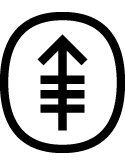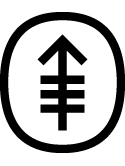Increased sensitivity to complement and a decreased red blood cell life span in mice mosaic for a nonfunctional Piga gene Journal Article
| Authors: | Tremml, G.; Dominguez, C.; Rosti, V.; Zhang, Z.; Pandolfi, P. P.; Keller, P.; Bessler, M. |
| Article Title: | Increased sensitivity to complement and a decreased red blood cell life span in mice mosaic for a nonfunctional Piga gene |
| Abstract: | The gene PIGA encodes one of the protein subunits of the alpha 1-6-N acetylglucosaminyltransferase complex, which catalyses an early step in the biosynthesis of glycosyl phosphatidylinositol (GPI) anchors, PIGA is somatically mutated in blood cells from patients with paroxysmal nocturnal hemoglobinuria (PNH), leading to deficiency of GPI-linked proteins on the cell surface. To investigate in detail how inactivating mutations of the PIGA gene affect hematopoiesis, we generated a mouse line, in which IoxP-mediated excision of part of exon 2 occurs on the expression of Cre, After crossbreeding with Ella-cre transgenic mice, recombination occurs early in embryonic life, Mice that are mosaics for the recombined Piga gene are viable and lack GPI-linked proteins on a proportion of circulating blood cells. This resembles the coexistence of normal cells and PNH cells in patients with an established PNH clone. PIGA(-) blood cells in mosaic mice have biologic features characteristic of those classically seen in patients with PNH, including an increased sensitivity toward complement mediated lysis and a decreased life span in circulation. However, during the 12-month follow-up, the PIGA(-) cell population did not increase, clearly showing that a Piga gene mutation is not sufficient to cause the human disease, PNH, (C) 1999 by The American Society of Hematology. |
| Keywords: | protein; embryonic stem-cells; molecular-cloning; membrane; regulatory; somatic mutations; paroxysmal-nocturnal hemoglobinuria; decay-accelerating factor; reticulocytes; a gene; gpi-anchor biosynthesis |
| Journal Title: | Blood |
| Volume: | 94 |
| Issue: | 9 |
| ISSN: | 0006-4971 |
| Publisher: | American Society of Hematology |
| Date Published: | 1999-11-01 |
| Start Page: | 2945 |
| End Page: | 2954 |
| Language: | English |
| ACCESSION: | WOS:000083351200002 |
| PROVIDER: | wos |
| PUBMED: | 10556176 |
| DOI: | 10.1182/blood.V94.9.2945 |
| Notes: | Article -- Source: Wos |
Altmetric
Citation Impact
BMJ Impact Analytics
MSK Authors
Related MSK Work





